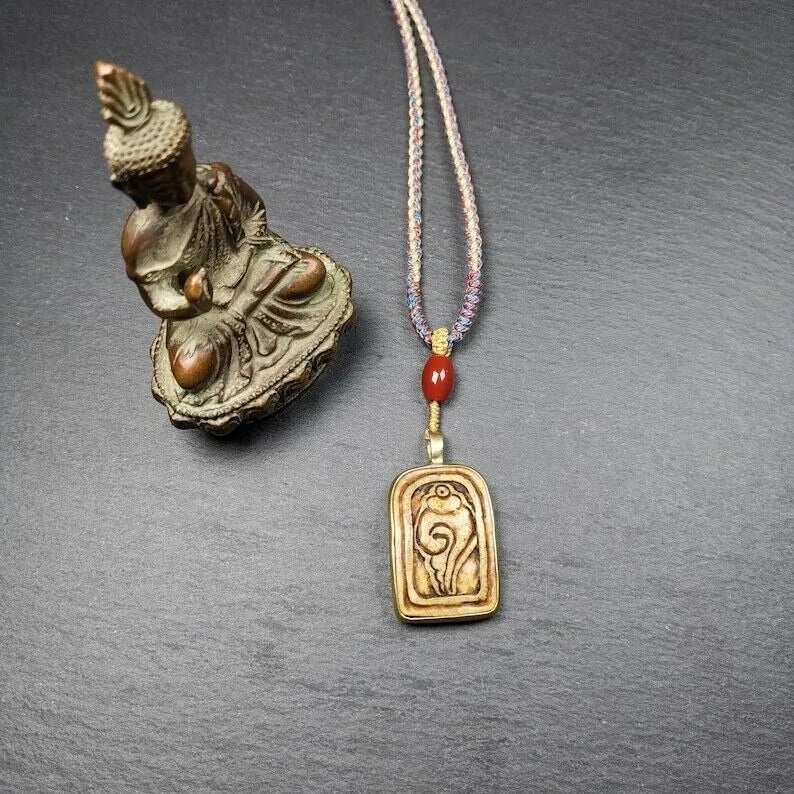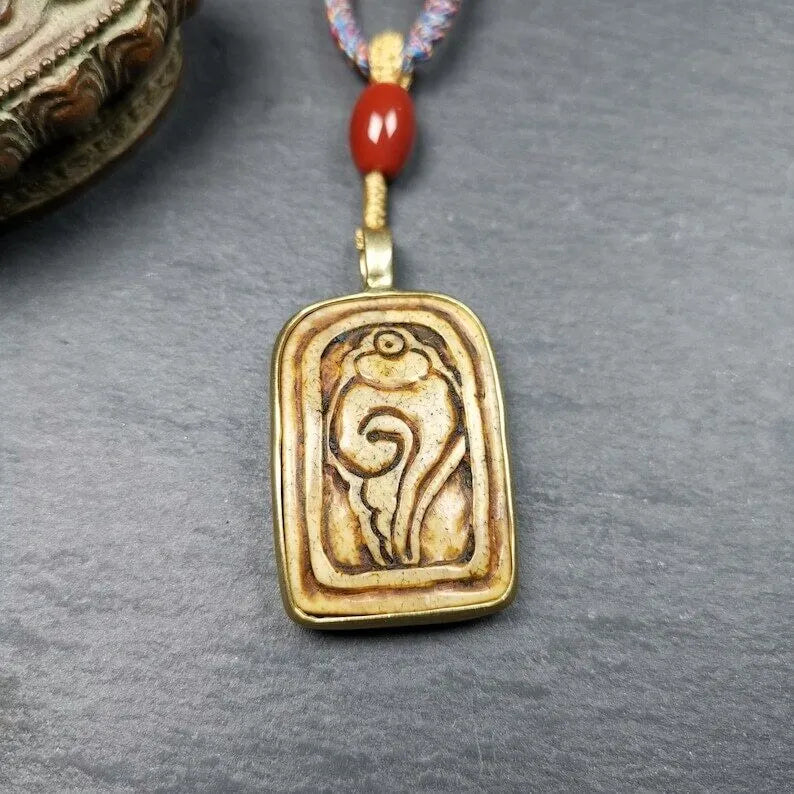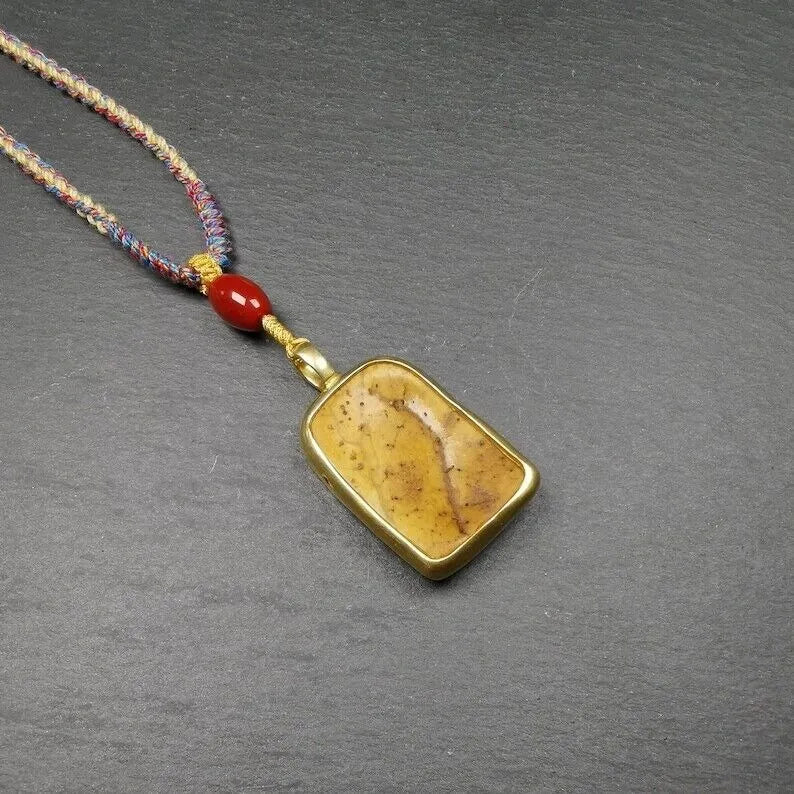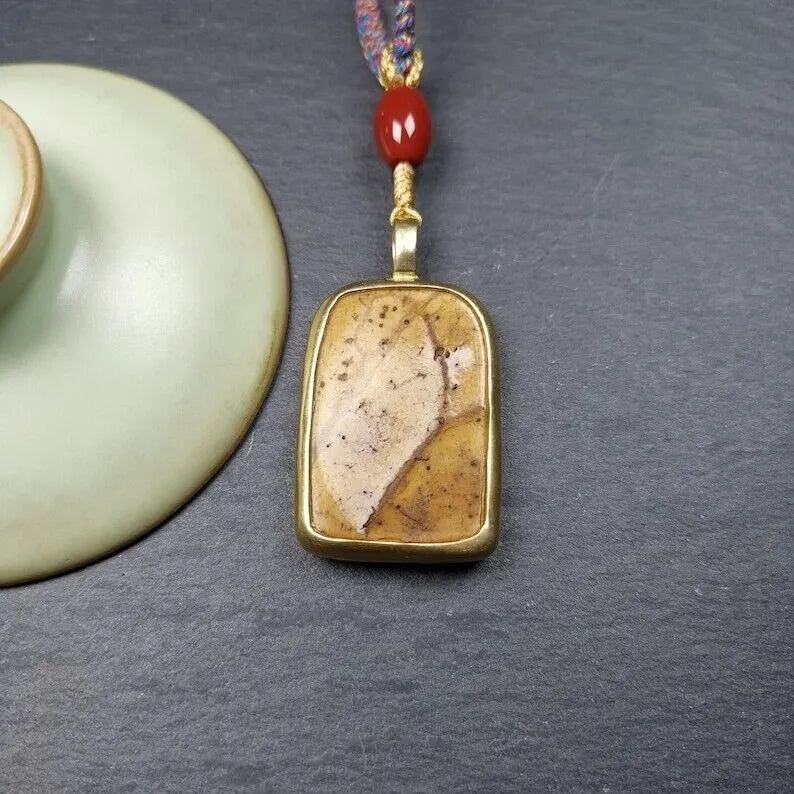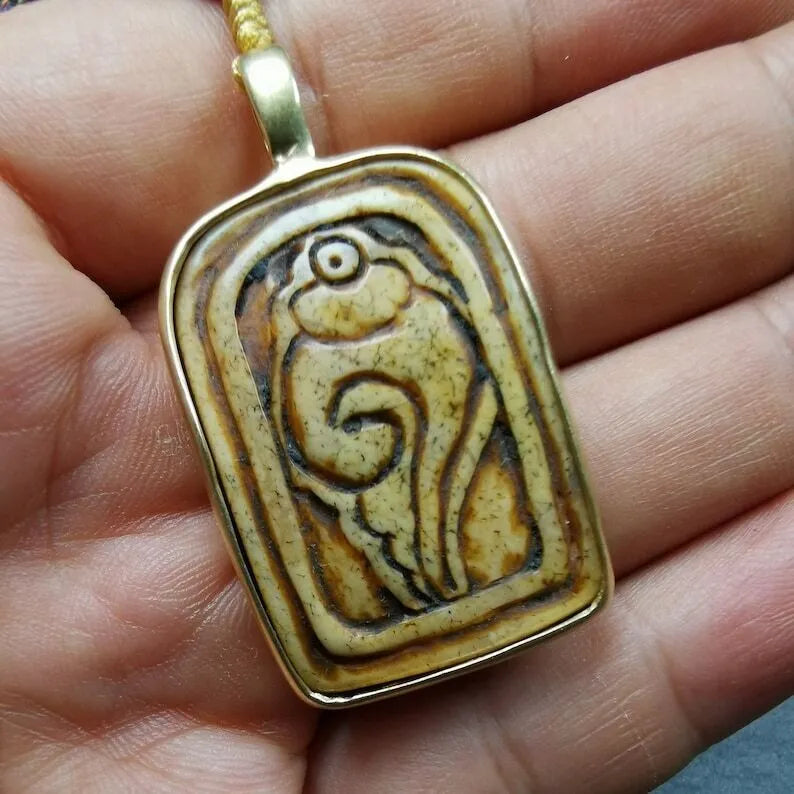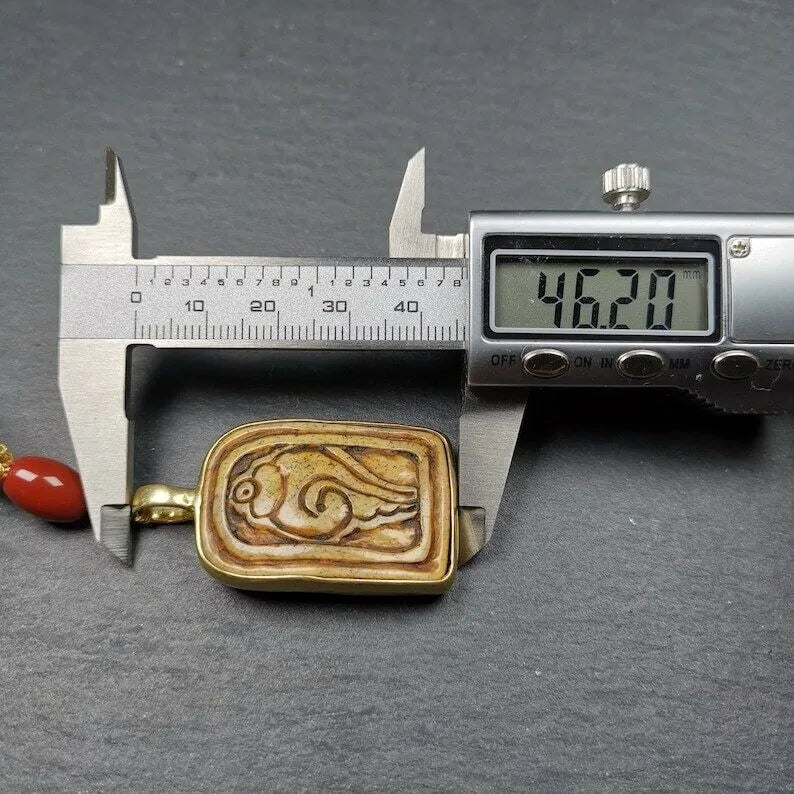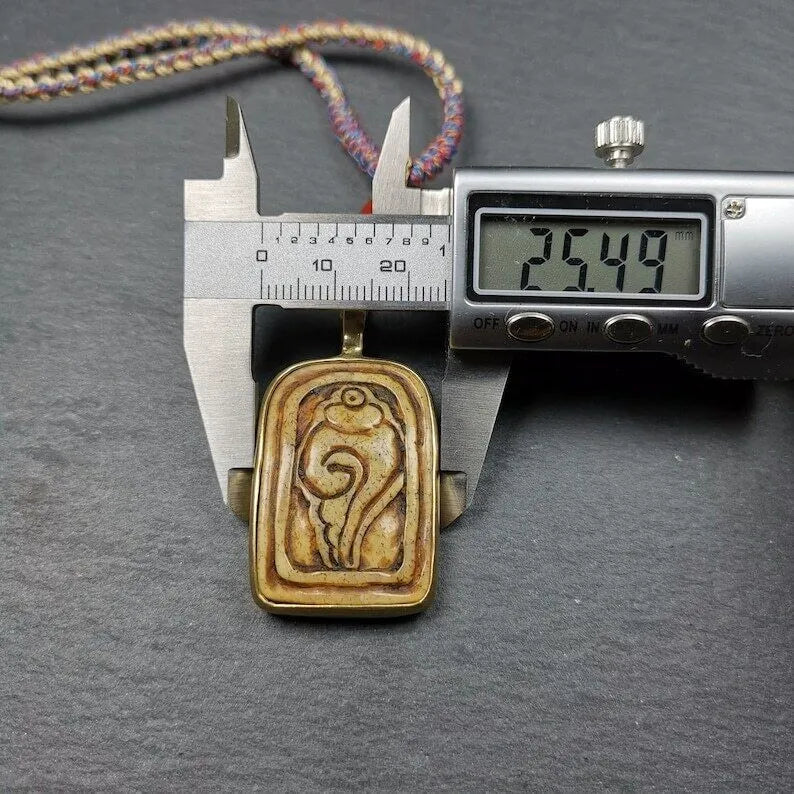Kapala Amulet,Conch Shell Shankha Pendant
Kapala Amulet,Conch Shell Shankha Pendant
⏱Vintage: 1980s
☞Handmade: 100%
⚒Materials: Skull Bone,Brass
☲Size: 46 × 25mm
Couldn't load pickup availability
ONLY ONE,UNIQUE
This kapala conch badge pendant was collected from Kathok monastery,Kham Tibet,about 40 years old.
It is hand carved conch shape on kapala,lima brass frame.Hand-woven lanyard with agate spacer bead, very beautiful and full of power.
Details
Material:kapala,lima brass, agate
Color:yellow
Pendant Size:
Height: 46mm / 1.8" Inches
Width: 25mm / 0.98" Inches
ABOUT Shankha
A Shankha (conch shell) has religious ritual importance in Hinduism.
In Buddhism, the conch shell has been incorporated as one of the eight auspicious symbols, also called Ashtamangala. The right-turning white conch shell (Tibetan: དུང་གྱས་འཁྱིལ, Wylie: dung gyas 'khyil), represents the elegant, deep, melodious, interpenetrating and pervasive sound of Buddhism, which awakens disciples from the deep slumber of ignorance and urges them to accomplish their own welfare and the welfare of others.
In Hindu mythology, the shankha is a sacred emblem of The Hindu preserver god Vishnu. It is still used as a trumpet in Hindu ritual, and in the past was used as a war trumpet. The shankha is praised in Hindu scriptures as a giver of fame, longevity and prosperity, the cleanser of sin and the abode of goddess Lakshmi, who is the goddess of wealth and consort of Vishnu.
The shankha is displayed in Hindu art in association with Vishnu. As a symbol of water, it is associated with female fertility and serpents (Nāgas). The shankha is the state emblem of the Indian state of Kerala and was also the national emblems of the Indian princely state of Travancore, and the Kingdom of Cochin.
The shankha is one of the eight auspicious symbols of Buddhism, the Ashtamangala, and represents the pervasive sound of Buddhism.
A powder made from the shell material is used in ayurveda as a treatment for stomach ailments.
In the Western world,the shell of this species is known as the "divine conch" or the "sacred chank". It may also be simply called a "chank" or conch. The more common form of this shell is known as "right-turning" in a religious context, although scientists would call it "dextral". A very rarely encountered form has reverse coiling which is called "left-turning" in a religious context, but is known as "sinistral" or left-coiling in a scientific context.
ABOUT GANDHANRA
We're artisans from Hepo Township, Baiyu County,Tibetan.
We use ancient Tibetan handicrafts to make Tibetan Buddhist instruments.
All our crafts are directly handmade from Tibet.
When you purchase this craft it helps and support our artisan and our families in Tibet.
Your support is highly appreciated.
Packaging &Shipping:
As per our Product nature, we do the packaging.
For every single product, we do the bubble wrapping along with the paper carton boxes is also used for more safety.
In the case of heavy products, we also use wooden boxes too for more safe packaging and sent for the shipping process.
Feedback:
Our goal is to make sure my customer is happy and satisfied when you shopping with us.
Please contact or email before leaving negative feedback.
We will try out best to solve our issues. Please give us the chance to resolve any problem.
Notice:
1.Please allow 1-2mm error due to manual measurement.
2.The color may have different as the difference display.
3.Please make sure you do not mind before you bid.

